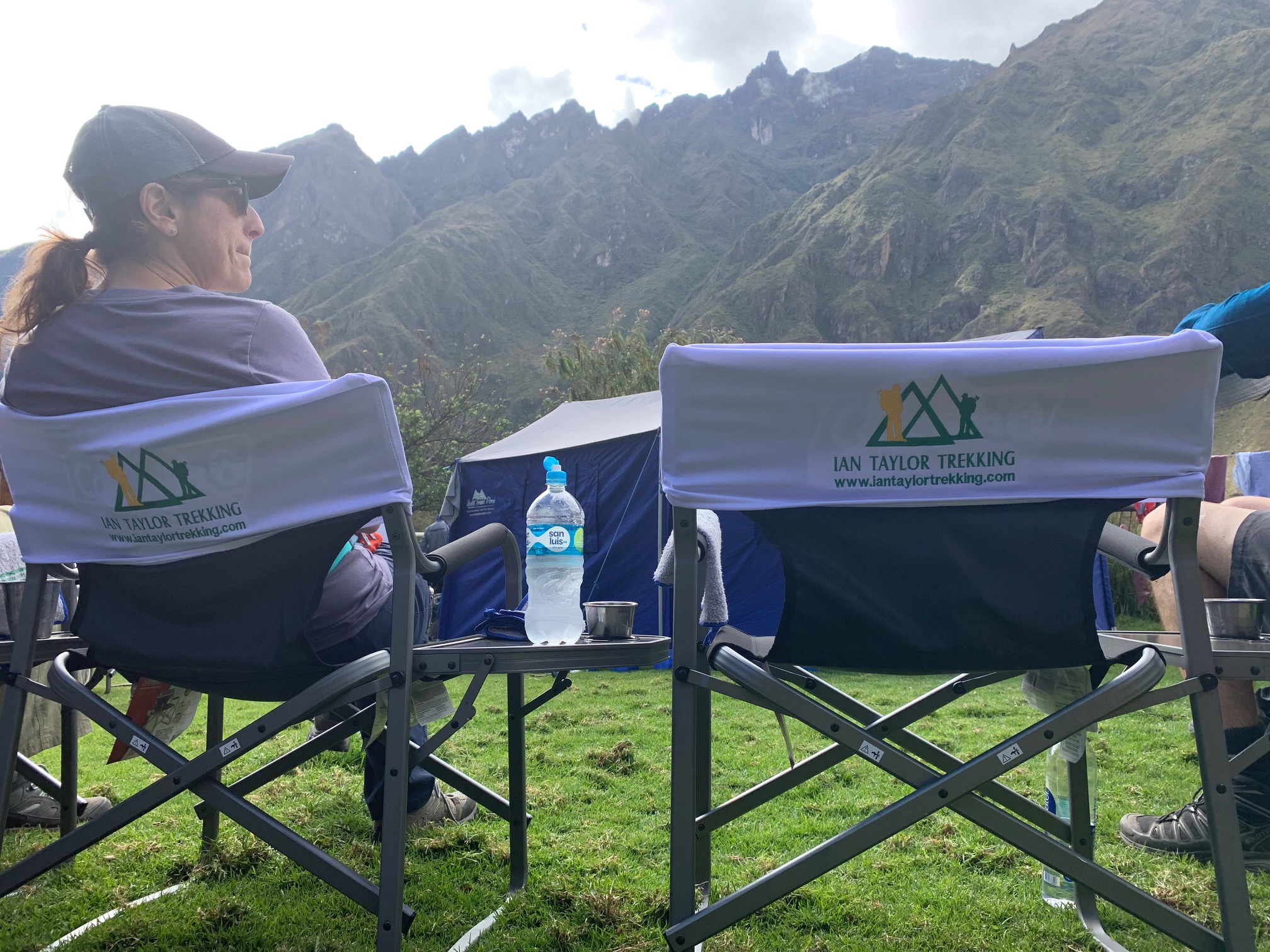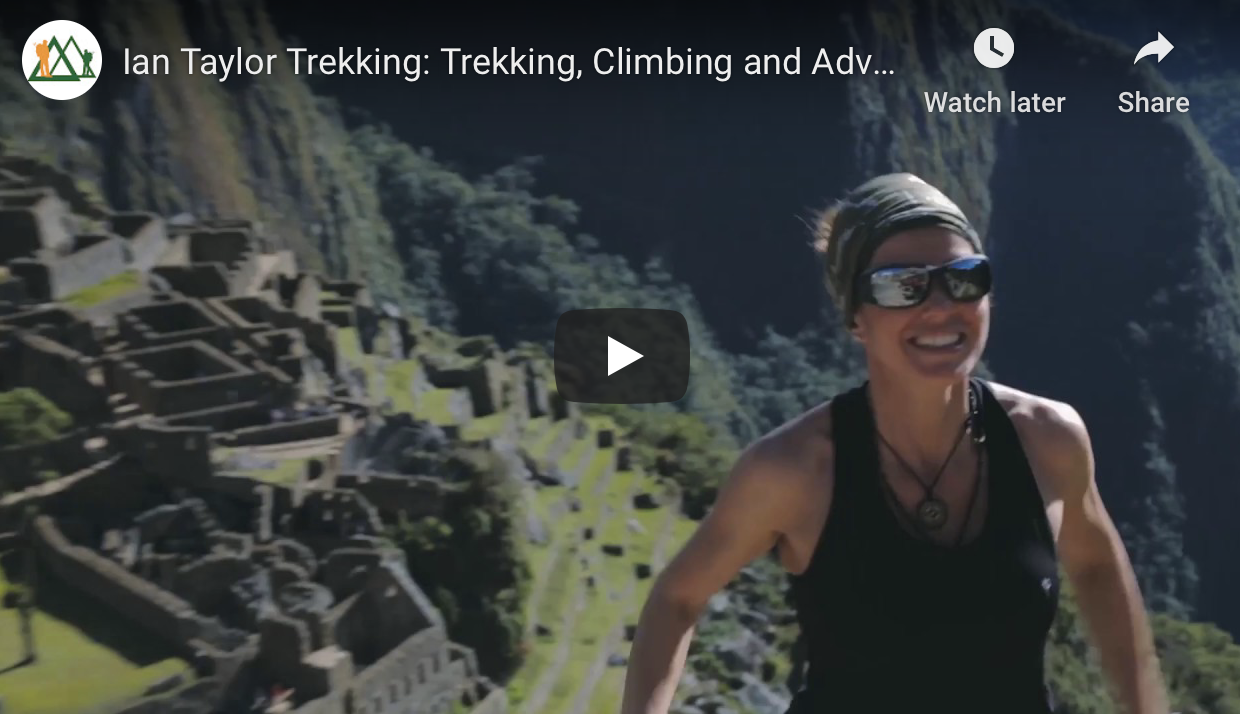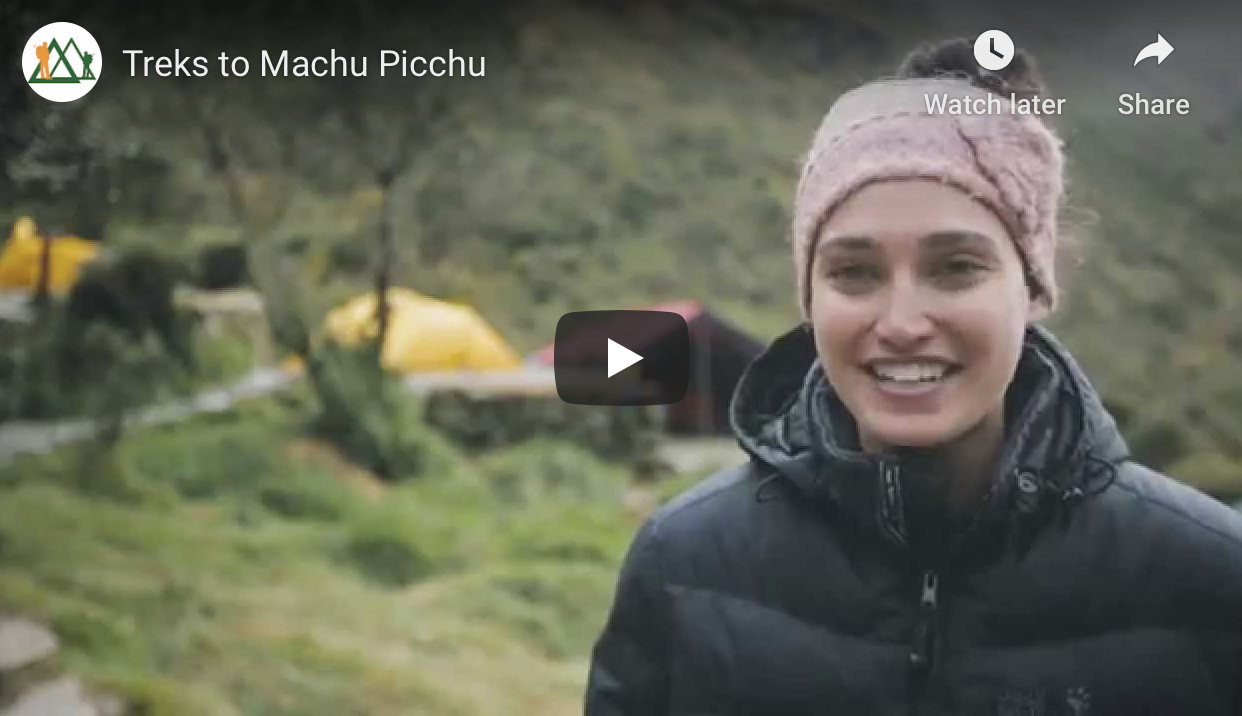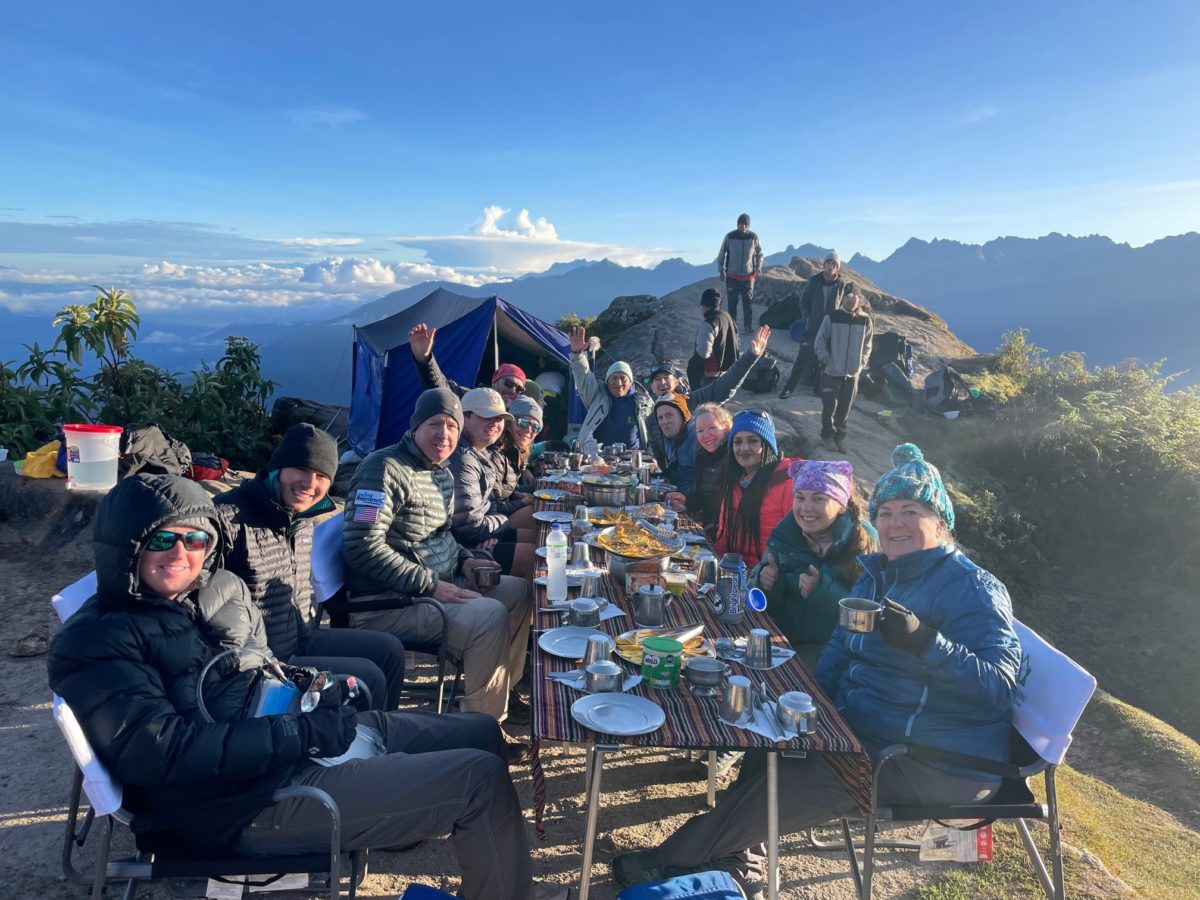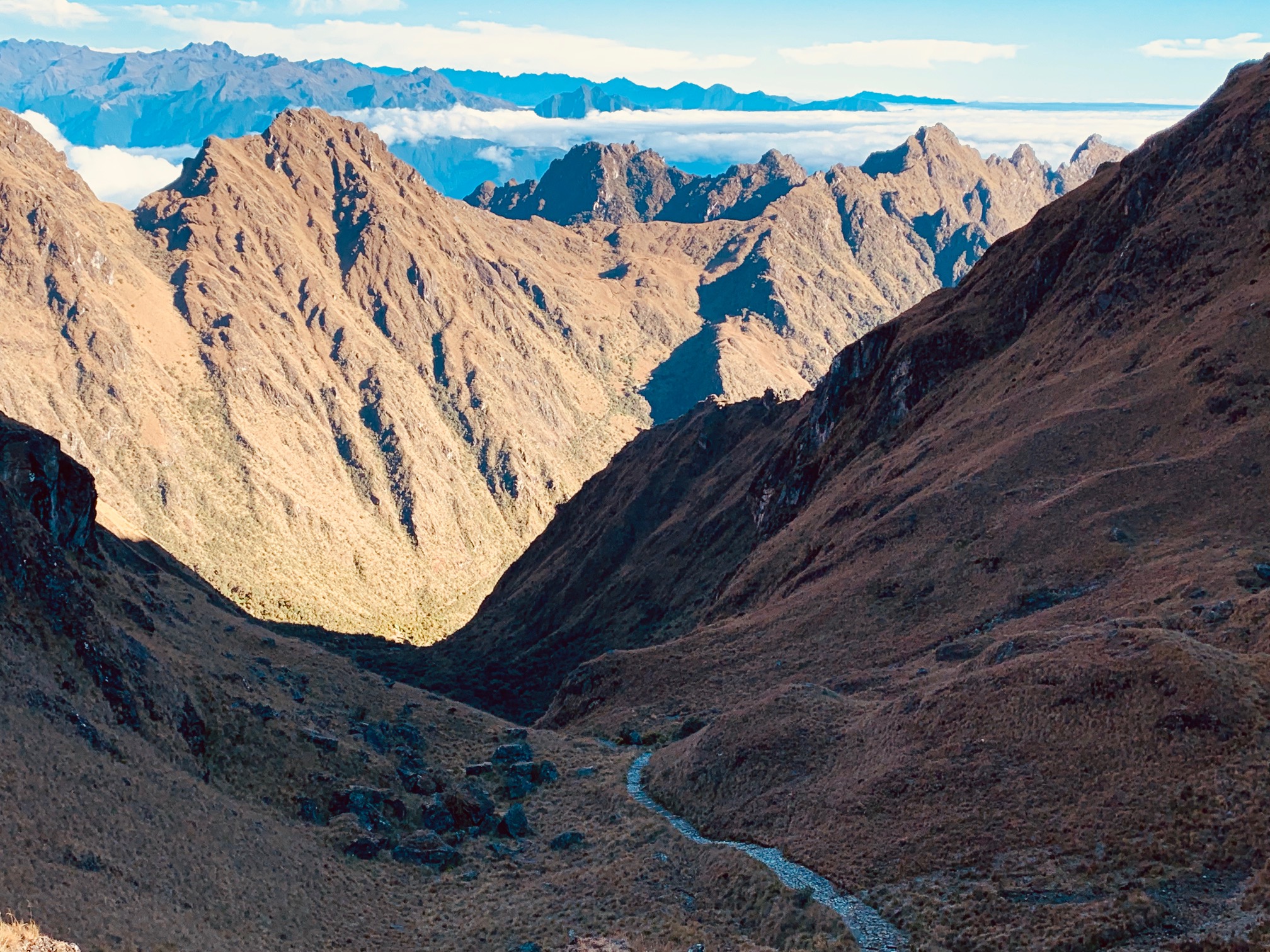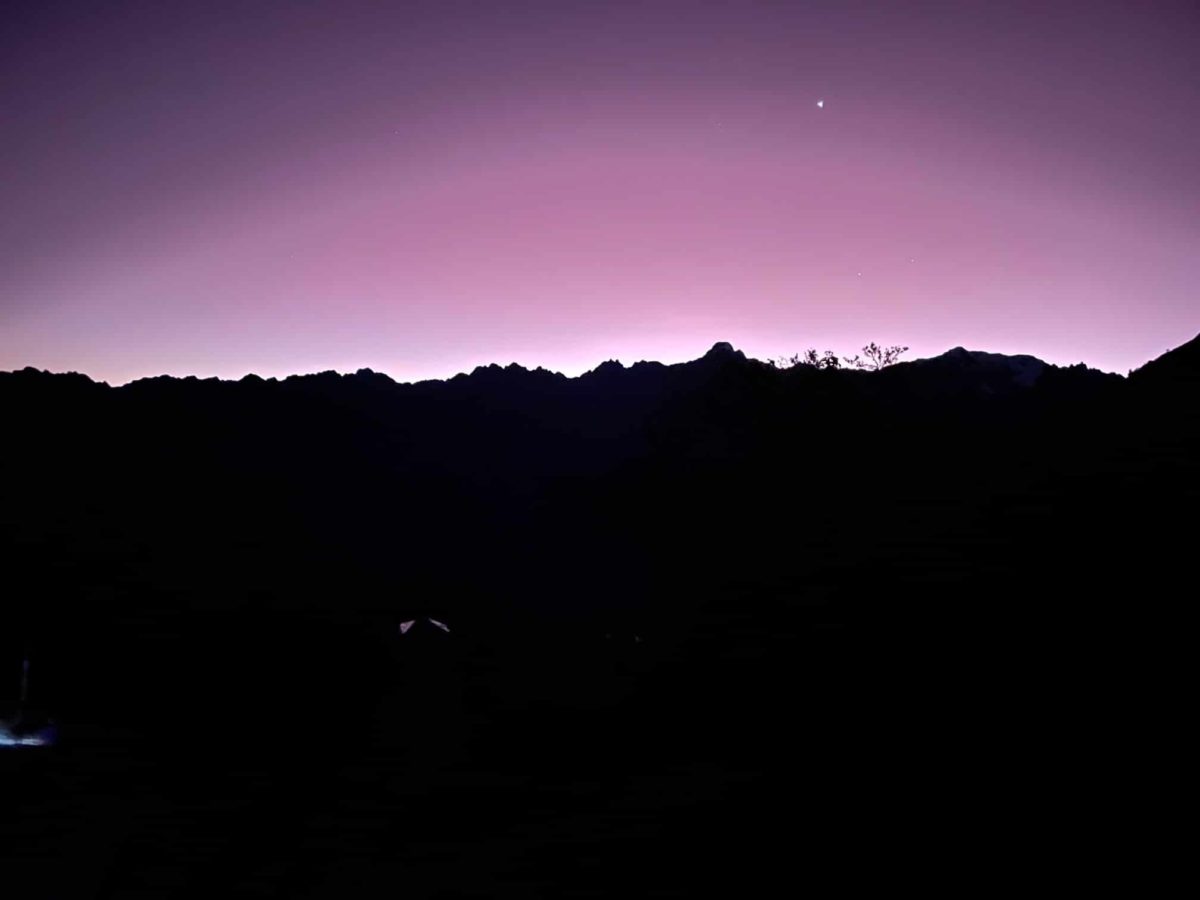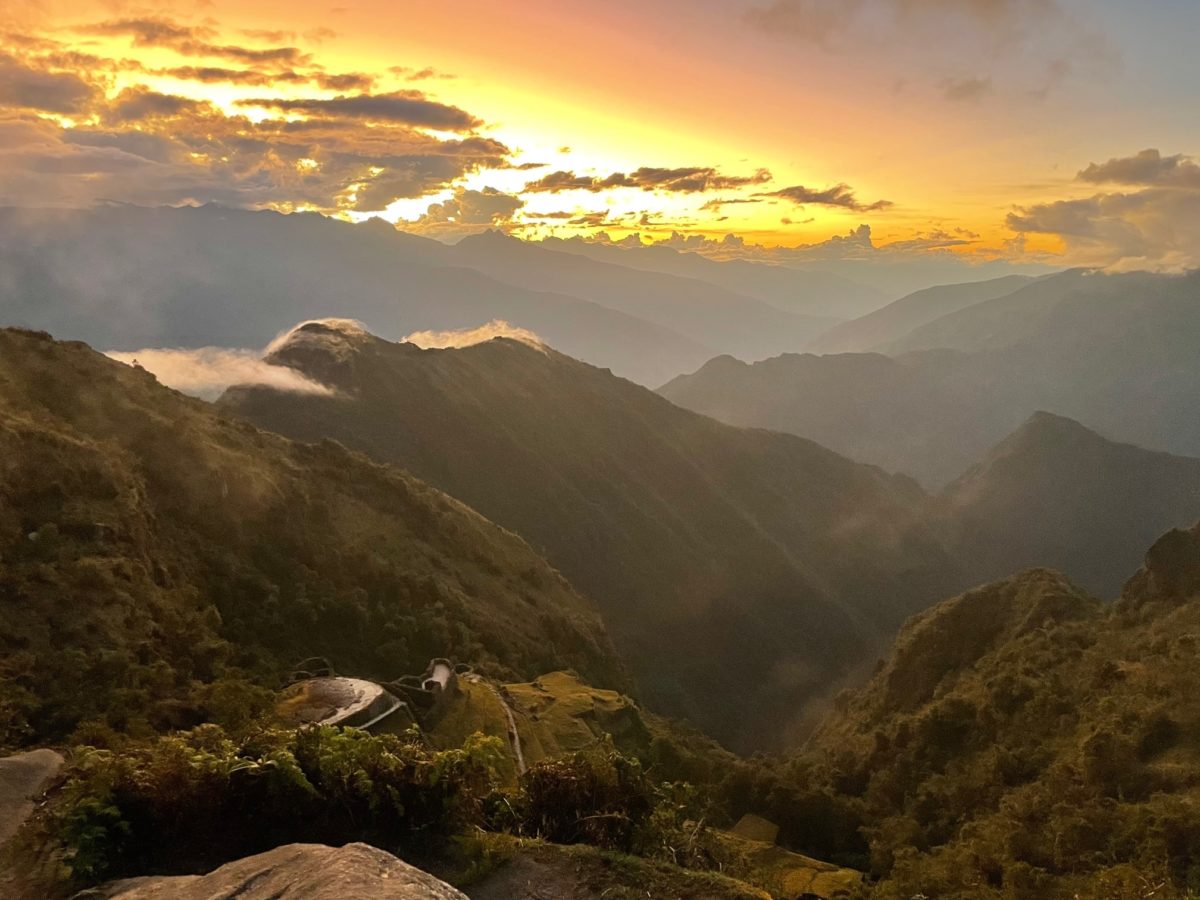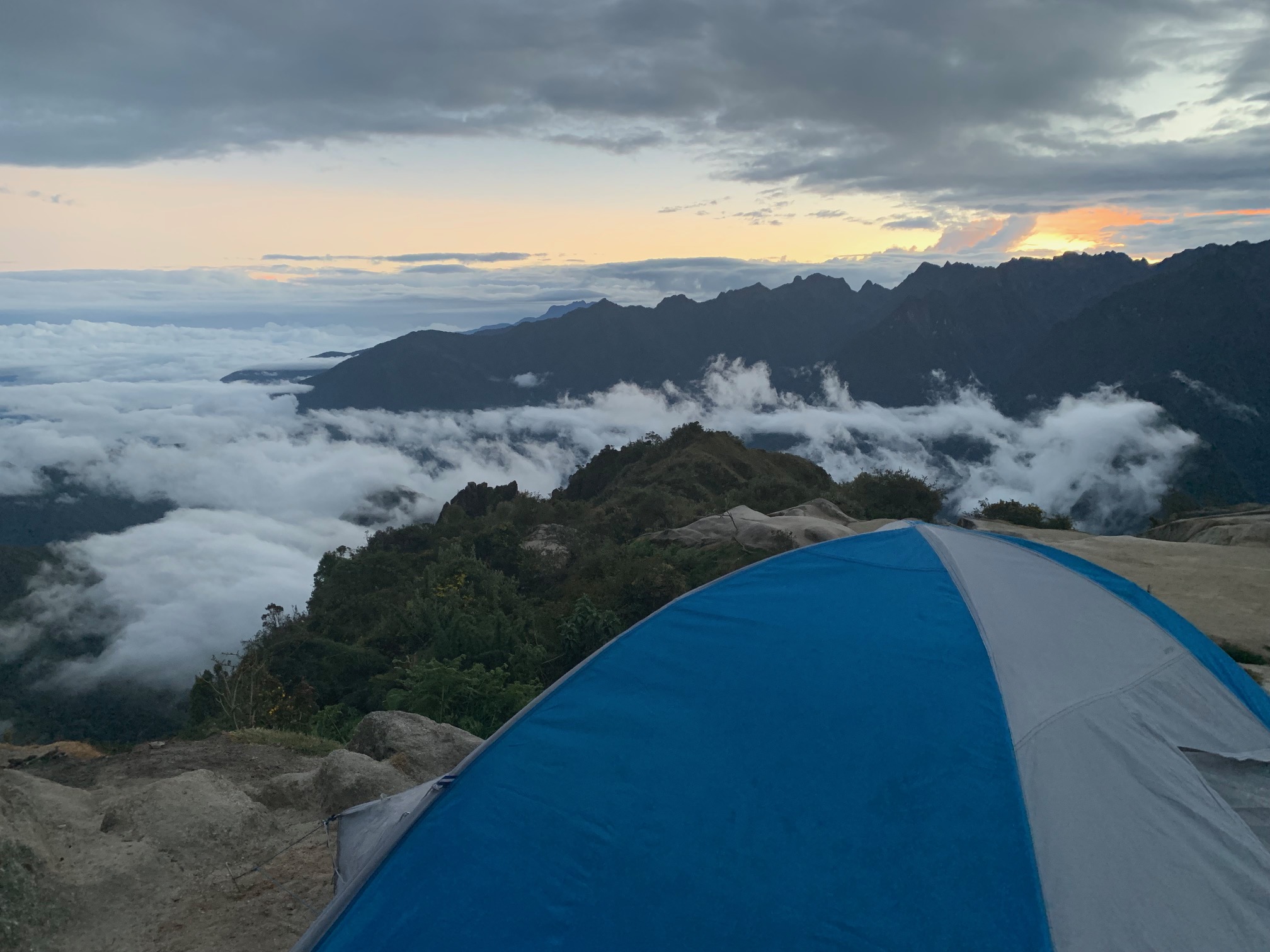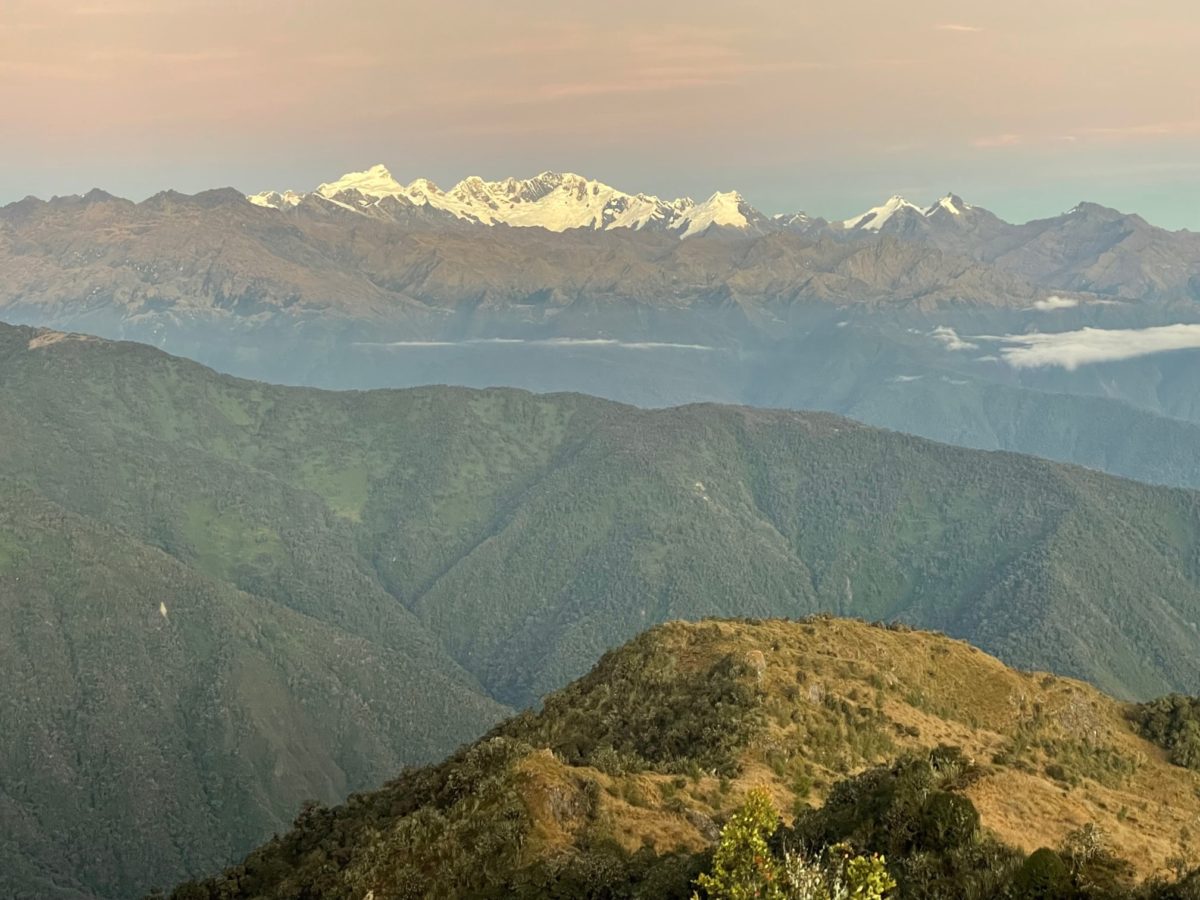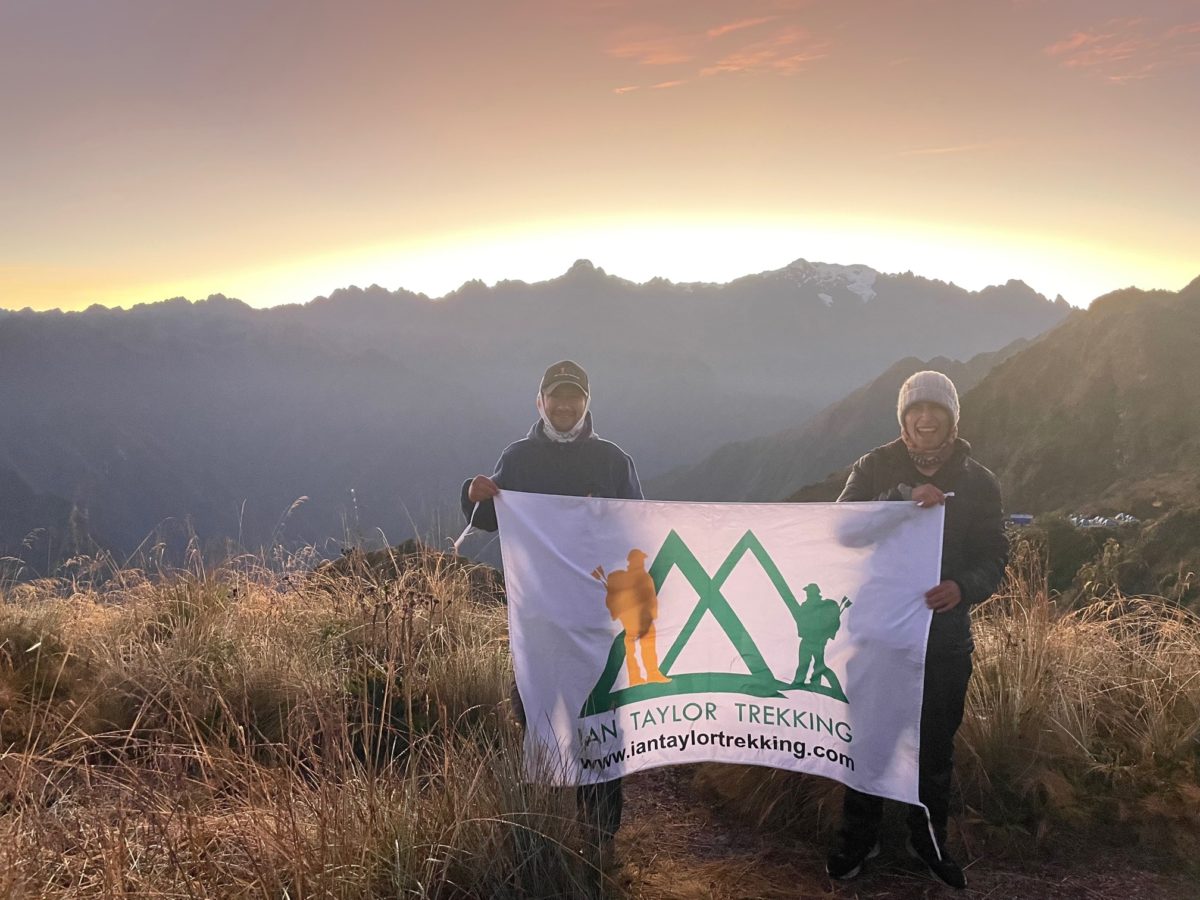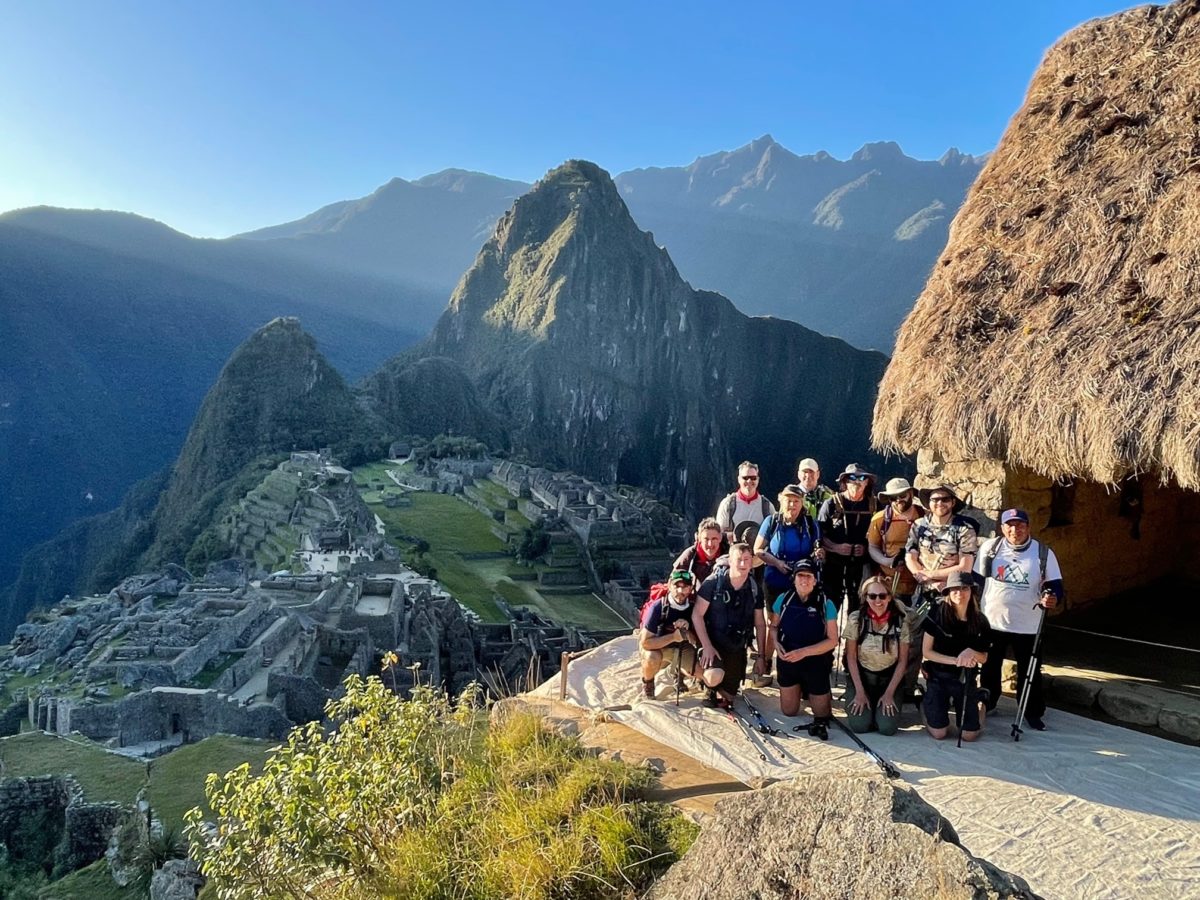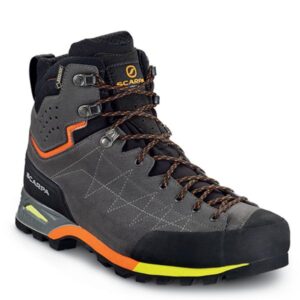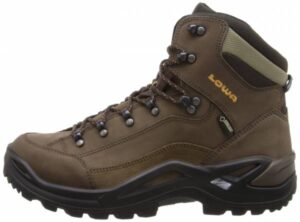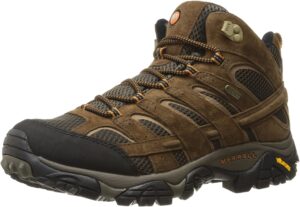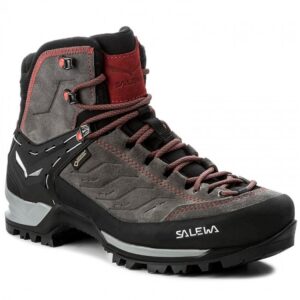Classic 5 Day Inca Trail Trek
Once we reach Machu Picchu from the Sun Gate on day 4 of our itinerary, we will have time to soak in the views and take in the beauty of the hidden City. Then, we will head down to Aguas Calientes for the night where we stay in a hotel and enjoy a nice dinner out on the town! The next morning, we wake early to head back up to Machu Picchu for our official city tour. Giving you more time in the magical city. Trips start from $2,950.
Tips & Advice
1). Picking the Right Itinerary is Critical
We highly recommend the 5 day classic itinerary. With new restrictions in the city of Machu Picchu, anyone entering the city is limited to just two hours. The 5 day itinerary gives you more time on the trail to experience every site along the way. This itinerary also gives you two visits to the city of Machu Picchu. Our 5 day itinerary also includes a night sleeping in the beautiful town of Aguas Calientes. After a well deserved shower, we will treat you to dinner in Indi Feliz to celebrate your success. The next morning, we will go back up to Machu Picchu for our second visit. On this day we will explore the ruins and do a full guided tour.
2). The Specific Training
Trekking the Inca trail to Machu Picchu is a 26 mile trek over 4 days of walking. You will be starting at 2,800m/ 9,186 feet, trekking up to 4,215m/ 13,829 feet and ending back down at 2,450m/ 8,038 feet. This trek should not be taken lightly. You will trek over a number of passes, steep ascents and descents, and thousands of rocky, uneven steps. Therefore, if you have not put in the training beforehand, you will definitely struggle on this uneven trail.
3). Break in your Trekking Boots
Make sure that you get the right boots and break them in. Having the right boots are an absolute must on this trek! You will be wearing these boots day in and out, along the extremely uneven and rocky trail. Do not arrive to the Inca Trail with a new pair of boots that you have not taken the time to break in.
4). Have all the Right Clothing and Gear
We want to make sure that all of our clients have the right gear, especially your waterproofs. Check out our packing video. The gear you bring with you on the trek can be the difference to your enjoyment levels on the trail.
5). Book Far in Advance to Avoid Disappointment
The Inca Trail is regulated by the government of Peru and therefore strict regulations have been put in place. Here is important information you need to review about the permits. The trail only allows for 500 people per day to be on it, including all porters/guides/cooks and tourists. This can limit your chance of being able to book a trek, unless you plan far in advance.
6). Pick The Best Month for your Trek
Pick your dates to best suit you. While you can hike on the Inca Trail year-round, there are definitely months in the year that have more suitable weather to take your journey than others. The months of May through September generally give you the best chance of being on the trail with the least amount of rainfall.
7). Arrive in to Cusco Early for Additional Acclimatization
The beautiful town of Cusco, Peru sits at 3,400m/ 11,152 feet above sea level. If you are flying in from sea level, this is quite a large jump to take. You may feel the lack of oxygen and possibly even signs of altitude sickness on your arrival. It is not a good plan to start the Inca Trail after only one night sleep in Cusco. If time allows, you should sleep at least two nights in Cusco. This will give yourself that much needed time to acclimatize.
8). Hydration is Critical
Drink, Drink, Drink. Water is your best friend at altitude! Keeping yourself hydrated at altitude is extremely important. Your body dehydrates much quicker at altitude. Therefore, you need to replenish your fluids and drink a lot more water than you may do back home. I always try and drink anywhere from 4 to 5 liters a day when at altitude. If your follow this rule, you will combat altitude sickness and keep yourself feeling good throughout the trip!
9). Be Prepared for the Outdoors
The Inca Trail to Machu Picchu is one of the World’s most beautiful and well-traveled trails. It is accessible to most people out there who are avid walkers/hikers, however, it is still the outdoors and you have to be prepared.
10). Pacing Yourself on the Trail
One of the biggest mistakes people make while on an altitude trekking trip is to over exert on the trail. You don’t want to be in a position that you are out of breath and fatiguing your muscles when trekking. Likewise, you want to avoid having a high heart rate while walking on the trail. You need to keep the pace at a slow and controlled speed to make sure that these things don’t happen. If you feel that your guide is going too fast, then slow down and take it at the speed you need to be comfortable. It is not a race to the finish line!
There are hundreds of Inca Trails across the Incan Empire. However, the famous Inca Trail to Machu Picchu is part of the Machu Picchu National Park system. The Inca Trail and region are protected areas, managed by The Peru National Institute of Natural Resources. In order to be on the official Inca Trail to Machu Picchu, you need a permit to trek in this region and those can be difficult to get!
Strict Permitting on the Inca Trail
The government has very strict permitting rules on the Inca Trail, which is great. It keeps the trail very well regulated. Therefore the upkeep of the region, sites and Machu picchu are now better protected. Before the early 2000’s, there were no regulations safekeeping the Inca Trail. This meant that over 1,000 people per day were attempting to trek this famous trail, creating a wide range of problems. You can image the toilet situation on the trail. The Peruvian government decided to step in and make a few changes. A plan was implemented to protect the future of this UNESCO World Heritage-listed site.
Permits are Limited and Demand is High
There government has implemented a very strict limit on daily Inca Trail access. The permits only allow for 500 people per day to start the trail. This is roughly made up of 200 tourists and 300 porters, guides and support staff. There’s also a limit to the number of visitors allowed to enter the site of Machu Picchu – capped at 2500 people per day. With limited availability on the Inca Trail, it helps to start planning your trip well in advance to ensure you can obtain a permit in time to get a space on the trek. Permits and fees on the Inca Trail are non-transferable and they are non-refundable. Therefore deposits paid for the Inca trail are non-refundable. Read more.
The Five Best Months to Trek the Inca Trail
If we had to break down to only five months to trek to Machu Picchu, we would say the best options are May, June, July, August and September. It is not that you can not trek outside of these months, however, these five months are generally the best! You do have to be ready for precipitation at any months of the year on the Inca Trail, however, these winter months generally have the least amount of rainfall. Make sure you are doing the right preparation for your trek.
The Three Best Months to Trek the Inca Trail
In our opinion, the best three months to trek to Machu Picchu are June, July and August. These would also be the busiest times to be in the region as it falls in line with summer vacation for people living in the Northern Hemisphere. The weather is very steady during these three months and while you can always count on a bit of rain, generally the skies are clear! We have our own full time staff member on the ground in Cusco and we only run quality treks to Machu Picchu.
The Best Month for Trekking to Machu Picchu
Our favorite month to trek the famous Inca Trail to Machu Picchu is June. It is a little colder than other months but generally with less bugs. As you can tell, we are not big fans of mosquitoes and bugs on the trail! The temperatures in June are generally cooler, however it does not vary greatly in the region. Usually, by 10am, the temperature is around 15c/ 60f, but the evenings and mornings are generally cooler!
We only serve quality food on Inca Trail treks to Machu Picchu.
High Quality and Nutritious Meals
We pride ourselves in offering a wide range of quality food at each meal. On the trail, you will be served three course meals, three times a day, including nothing but the best available. Making sure that you have the right quality, nutritious and fresh meals throughout the entire trek is very important to us.
Fresh, Nutritious and Varied Meals
Likewise, our team can accommodate your food sensitivities as well. If you are gluten free, vegetarian or follow other special diets, then we can make sure you have the food you need. We have developed the right menu over the years to give you quality throughout. Read more.
Preparation & Training
One thing to remember about the Inca Trail is that is heavily consists of stairs, going both up and down. This can be one of the most challenging parts of the trek and something that you want to make sure you are prepared for. Depending on what itinerary you choose to do will also play into how much training/preparations you need to do. We recommend our Classic 5 Day Inca Trail because it spreads out the walking to four full days of trekking.
Steps, Steps and More Steps
Thousands and thousands of steep challenging steps up and down will likely be the most testing part of the trip. And for most, the way down will be the hardest. Throughout the trail, you have to go over three high passes. From the third pass, at 3,670m/ 12,041 feet, you will have to get down to the final camp site at Winay Wayna, which is at 2,700m/ 8,858 feet. So, on that day alone, you will be dropping down 3,183 feet on a steep descent. On another day, you will be walking up 1,115m/ to the highest altitude at 4,215m/ 13,828 feet, then dropping down 715m/ 2,346 feet in one day. This is tough on the knees, Calves and quads, especially when you also will be carrying your backpack with approximately 5kg – 10kg/ 11lbs – 22lbs.
Long Days on the Trail
No matter what itinerary you choose to take, the Traditional 4 Day, Classic 5 Day, or the Salkantay 6 Day trek, you will have some very long and challenging days of trekking ahead. The highest point on the Traditional 4 Day or the Classic 5 Day is at 4,215m/ 13,776 feet at the pass of Wanusca (Dead Woman’s Pass). On the Salkantay 6 Day option, you will reach the high point of the Incachiriasca Pass at 4,850m/ 15,912 feet. In order to safely and successfully reach those high points, it is imperative that you take it slow and steady and have the right physical preparations in place.
How Should you be Training
You should aim to train 4/5 times a week in preparation for your Inca Trail Trek to Machu Picchu. However it is hard to give a one size fits all for your training plan. Everyone is starting in a different place and has different levels of access. So your training program will depend on a wide range of factors. We recommend getting a fitness test, before you start the training, so you know you max heart rate and training zones. Most of your training should be done at lower heart rate levels in the aerobic zone. You also need to start will less time and less weight in your back pack, and work your way up. Your goal should be to build, endurance, leg strength, overall body strength, balance and lung capacity. Sign up and get further information.
Not everyone will have access to hills, but this is the best way to train your body and legs for down hill hiking. Depending on your chosen adventure you do need to assess the level of downhill. We have elevation gains available for all of our key trips. I encourage you to review the daily elevation drops and what type of terrain you will be walking on.
For example, on our Inca trail treks you will be drop 700m/ 2,296 feet to 1,000m/ 3,280 feet on different days all on steep rocky stairs. On Kilimanjaro you will drop 2,800m/ 9,186 feet in one day on scree and rock and this is very challenging on your legs and joints.
You have just walked for days on end you have reached your goal but not you have to retrace your steps, often in a quicker time frame. Hiking downhill will take its toll on your joints. Fore sure, the downhill hike will take more wear and tear on your joints and muscles than the uphill.
You do need to use effective training techniques to minimize the impact on your body. Descending using good technique means that you move faster and feel lighter. Remember, 80% of accidents happen on the way down.
Keeping Knees Healthy
We live in Eagle-vail Colorado with amazing access to altitude and a wide range of mountain terrain to train on. In Colorado we can train all year round on hilly terrain preparing for Kilimanjaro, Himalayan trekking and mountaineering trips. I know most of you are joining our trips from sea level and with minimal access to hill training. I encourage you to get out to Colorado doing some multi-day hiking in preparation for your chosen adventure.
If you do not have access to hills and mountains, you must figure out other ways to prepare your knee joints to handle downhill stress. From a knee perspective, downhill hiking means eccentric loading and typically thousands of repetitions of it. Eccentric loading (the lengthening phase of a contraction) is especially challenging to what is called the patellofemoral joint of the knee. This is where the knee cap, meets the femur. Inadequate strength, poor mechanics and lack of exposure to this type of loading can turn downhill forces into injury producing stress. Prior to your trekking trip you need to start implementing sport specific training into our general preparedness programming.
Hiking Uphill and Downhill
Hiking uphill is all concentric muscle action (muscle active while shortening) at the knee joint without any eccentric loading (loading while muscle is lengthening). Concentric only exercises tend to cause less mechanical stress, load and pain to joints and tendons than do exercises that have eccentric phases. What goes up must come down.
You must prepare our body and specifically your knees to handle downhill hiking. Depending on the trip, you really need 6 months of some sport specific training into our general preparedness programming.
The strength movements below are similar but slightly different in specific ways. We purposely only hit each one once per week because too much volume of these exercises could quickly lead to an over training injury, so be careful. I would recommend adding in additional hip flexor and quadriceps mobility work at the end of your training sessions as well to maintain good length tension relationships and to protect your spine.
The Point of These Exercises
Increase vertical loading volume of the knees with a sight posterior to anterior (back to front) force vector. Get exposed and accustomed to decelerating the vertical and forward forces using primarily a knee strategy. Transition from doing most lunges and squats with a 3 points of contact foot position to a more heel elevated position where we contact and press through the forefoot.
The 3 points of contact foot position is the most stable position for the foot and encourages a balance of hip and thigh musculature – great for general preparedness training. Transitioning to a heels elevated position where the forces are applied through the forefoot places most of the stress on the quadriceps and knees – optimal for downhill hiking training.
Exercises for Downhill Hiking
You should consider adding these movements into your weekly training 2 times per week. Add 3-5 sets of 10-15 repetitions (per leg)
1). Heels Elevated Goblet Squat
2). Forward Alternating Lunge with Farmers Carry Loading
3). Forward Alternating Drop from Box Lunges
4). Banded Posterior to Anterior (PA) Forward Lunges
Carrying Weight
One of the best ways of mitigating the risk of musculoskeletal issues is by carrying a light pack. Then build up the weight you carry over time. An overly heavy backpack is not recommended in the early stages of your training.
Extract its biggest toll on your body during steep and/or long downhill sections, so a hiker should always aim to travel as lightly as the dictates of their skillset and the environment into which they are venturing allow.
If you are carrying weight on longer hike you should slowly build up the weight you carry. You should also consider carry water uphill and dump as much water/ weight as possible for your downhill. Always assess the weight you are carrying for each hike and always build up slowly over time. You do not want to get injured.
Our Unique Itinerary
Day 1
Arrive at Cusco International airport. Our team will pick you up from the airport and bring you to the hotel for your stay in Cusco, which is on a shared basis. Because you are arriving into high altitude, we recommend taking this day to rest, rehydrate and slowly take in the sites of this beautiful and historical city! You will stay the night in the nice, 4 Star hotel of our choice, in a shared accommodation. We will have a briefing this evening, to go over the itinerary, and then you will want to get to bed early as tomorrow will be a long day! Remember, you are arriving into high altitude in Cusco at 3,400m/ 11,152 feet above sea level.
Day 2
Full day private Sacred Valley Tour including: Chinchero Incan site, visit local villages and explore the local way of life. We will also visit Ollantaytambo remains, Ollantaytambo village and spend the night here for quick access to the Inca trail. The Chinchero and Ollantaytambo remains are very special experiences in themselves, along with mixing with the culture, this day will live long in the memory. This day also gives your body a chance to acclimatize to the lower levels of oxygen. The day your will start at 8am and finish at 6pm and will include lunch along the way.
Day 3
The Inca Trail starts with a pickup from your hotel after breakfast, and then drive to the town of Ollantaytambo, where you can pick up any last-minute items you may need. From Ollantaytambo, we continue to the start of the trail, Piscacucho (AKA km 82) at 2,700m/ 8,858 feet. From here, we will have enough time to organize our backpacks and tour the entrance building, where we will learn more about the flora and fauna on the trail. Then, we will go through the controls where we need present our passports in order to enter the trail.
In the first stretch of the hike we will have beautiful views of the landscape and surrounding peaks, such as Apu Huakay Willka 5,850m/ 19,193 feet, otherwise known as Veronica. We will begin to see the many plants and trees of the region, which our team will explain as we walk. We will have our first delicious lunch, prepared by our chef and kitchen team, by the riverbank. After lunch, we will keep moving after the trek continues ascending lightly to a semi-tropical valley until we reach our campground at Wayllabamba 3,100m/ 10,170feet.
Day 4
We will rise early this morning for breakfast before we start what will be one of the toughest days on the trail. Today, we will be reaching the highest point in the Inca Trail, the high mountain pass of Abra Warmihuañusca, or the Dead Woman Pass, at 4,215m/ 13,776 feet. Along the climb today, the landscape will change from sierra to puna (a dry and high area with little vegetation). We will also have the chance to spot domesticated llamas and alpacas grazing on Ichu, one of the few plants that grow at that altitude. We also cross an area of the Cloud Forest, which is inhabited by many different kinds of birds like hummingbirds and sparrows as well as the Andean Bear, which is also called the Spectacled Bear (Tremarctus Ornatus).
We will have lunch at Llulluchapampa 3,850m/ 12,589 feet, where we will be treated with beautiful views out over the valley we have just came through. After lunch, we will continue further upwards to the top of the Dead Woman’s Pass. After a strenuous morning and early afternoon of ascending the pass, you will get to the summit to celebrate. After enjoying the views and having a break, we will then begin the steep, downhill trek on uneven stairs, for approximately 700m/ 2,296 feet down to our campsite for the night. Tonight, we will be sleeping in Pacaymayu Camp at 3,500m/ 11,482 feet.
Day 5
We start the day with a climb up to the second pass, the Abra Runkurakay at 3,970m/ 13,022 feet. Halfway up the pass, we will stop to visit the archaeological complex with the same name. This site, located at 3,800m/ 12,464 feet, consists of a small oval structure that is believed to have served the purpose of a watchtower.
After visiting the site, we will continue to the top of the pass. From there, we descend towards Yanacocha (Black Lagoon) and enter the cloud forest. We will then arrive at the beautiful complex of Sayacmarca at 3,624m/ 11,887 feet, which we will do a tour. After the tour, we will arrive at Chaquicocha, where a beautiful lunch will await! It has been a long morning until we reach the lunch spot, so having an extra snack with you to tide you over will be important today!
After lunch, we will continue on the trail towards the third pass, the Abra Phuyupatamarca, at 3,700m/ 12,136 feet, where we spend the night. This section of the trail takes us through lush landscapes, with great views off the trail towards Mount Salkantay and the Amazon Forest. We will go through the first of the Incan Tunnels before reaching our camp site at Abra Phuyupatamarca, which means town over the clouds. Tonight, we are high above Macchu Picchu, and will have stunning sunsets and views of the surrounding mountains. Today will have been a very long day, but worth it with the wonderful views and experiences you will have!
Day 6
After our delicious final breakfast on the trail, we will have a short walk down to the Phuyupatamarca Ruins, where we will have a tour. From there, we will continue down 900m/ 2,952 feet, to reach Wiñayhuayna, on steep stairs all the way down. On the way to Wiñayhuayna, we will stop in to view the beautiful ruins of Intipata. From there, we will continue the descent for half an hour before visiting one of the most impressive Incan sites, Wiñayhuayna, which is built into the side of the mountain. After this spectacular tour of the ruins, we will hike back the same way, to have our last lunch on the Inca Trail. Here, we will tip and thank our porter team and the cooks for the great experience we have had.
After lunch, we follow a narrow trail that leads us around Machu Picchu mountain, towards the Sun Gate (Intipunku), which will give us the first views of the city of Machu Picchu. Before reaching the Sun Gate, we will have a very steep section of approximately 50 steps, which leads you up to the exciting and stunning views below! With the views of Machu Picchu city below, you will stand in awe of this unique mystical place. After enjoying the famous Sun Gate, we will descend for about an hour until we arrive the Guardian’s House, where we will have the opportunity to contemplate Machu Picchu in all its splendor. We will take photographs and enjoy our first visit to Machu Picchu on our itinerary.
After we have spent some time enjoying the views, we will continue down to the checkpoint, where we will take bus from the Inca city of Machu Picchu to Aguas Calientes, or Machu Picchu town. We will spend the night in a hotel, on a shared basis. After a well-deserved shower, we will head out for a celebratory dinner at the famous Indio Feliz restaurant.
Day 7
We will wake early this morning and have breakfast in the hotel before we begin the journey back up to Machu Picchu. From town, we will board a bus, which will take us back up to Machu Picchu City. Here, we will have a complete guided tour of the City, which will take approximately two hours. After the tour, you will have some free time to enjoy the views or if you have booked the climb up Huayna Picchu Mountain (which needs to be booked/paid for in advance), then you will continue on to do this. Huayna Picchu will give you spectacular views of all of Machu Picchu, the valleys and mountains that surround it.
Once you are finished in Machu Picchu, you will have your bus ticket to get back down to Aguas Calientes. You will have some free time to explore the city of Aguas Calientes before meeting at a designated time and location set out by the guide. From here, we will take the train back to Ollantaytambo, where our private transportation will await, for the journey back to Cusco. After a long day, we will reach the hotel in Cusco and you will be free to enjoy the evening in the City for your final night.
Day 8
You will be picked you up from your hotel in Cusco depending on your flight time. We will drive you to the airport for your onward journey. There are options to join tours to the Amazon, Lake Titicaca and other treasures Peru has on offer. If you decide to spend additional nights in Cusco, we are happy to assist with booking extra nights in the hotel for you.
Equipment
If you are joining one of our treks to Machu Picchu, then we will send you a 35 page Dossier with all the information you need to know about the trek. This will include a complete kit list, with examples of all the gear that you will need for your trip.
What Will you Have in Your Backpack
There are a number of items you will need in your in your day pack. You will need to carry 2 to 3 liters of water with you each day. There will be water available each day and at lunch time. You will also need to carry, sunhat, rain gear, one layer, camera, and small medical kit. Also, remember to always carry your passport and money with you each day as well.
1). La Sportiva TXS GTX
This is a new boot from La Sportiva, that has replaced our beloved Trango Trek GTX. We prefer a more rigid sole under foot and these boots do a great job. They breathe well, are lightweight and waterproof. Some of our Sherpa and Kilimanjaro guides wear these boots as well. Ian used these boots on four Kilimanjaro climbs this year along with three Everest Base Camp trips, and they are still in great condition for the same again next year. This boot would be a great option for your trek to Machu Picchu!
2). Scarpa Zodiac Plus GTX
Scarpa has come out with a new lighterweight option in the Zodiac. These boots are Gore-Tex, so a waterproof boot to keep you dry if you experience moisture on the trail. They also have good ankle support and lacing system. These boots, similar to the La Sportiva TXS, have a more rigid sole. This is ideal for the stairs you will encounter on the Inca Trail. Scarpa are always re-inventing trekking boots and if they fit your foot correctly, then they may be the right boot for you. They work great and last a long time. Also, if you decide on more challenging trails after the Inca Trail, we would also recommend these boots for a Kilimanjaro climb, Elbrus or Everest Base Camp.
3). Lowa Renegade GTX Mid
The Lowa Renegade GTX Mid boot has been around for a long time and worn by many trekkers around the world! These are a perfect boot for the Inca Trail. They are waterproof, have good ankle support, and also have a semi-rigid sole. The grip of these boots and the more rigid sole is ideal for the many stairs on the Inca Trail. The negative of these boots is that they do have a lot of stitching on them, making them more susceptible to wearing out faster than other options. However, if you treat this boot well, you could wear this option for a trek to Annapurna Base Camp as well!
4). Merrell Moab Mid 2 Waterproof
The Merrell Moab Mid 2 Waterproof Trekking Boot has been around for years and there is a good reason for that, they are a great boot! These boots boast a waterproof membrane, good ankle support, comfortable and sturdy fit. The Merrell boot may be the option for you if you have a slightly wider foot or need more room in your toe box. This boot is a reliable and durable option that will be ideal for your Inca Trail trek! We would also recommend this boot for Kilimanjaro, Annapurna Base Camp or Everest Base Camp.
5). Salewa Mountain Trainer Mid GTX
Salewa has been coming out with a lot of new and very high quality boots over the past few years. While we have not personally worn this boot yet, however, we do have a lot of clients wearing these boots on the Inca Trail. We have had very good feedback on this option! They have Gore-Tex in the boot, so they are waterproof and also have a good amount of ankle support. This lightweight, but durable boot would be a great option for your trek to Machu Picchu.
FAQ
Q). Are we trekking on the main Inca Trail?
A). There are thousands of Inca Trails and we will be trekking on the famous Inca trail that walks into Machu Picchu. Hands down this is the best way to experience this magical region. This is the king of all the Inca trails and our itinerary gives you more time on the trail. We stay in the best campsites and you get two visits to Machu Picchu.
Q). When is the best time to trek the Inca Trail?
A). You can trek most of the year. The best 7 months are April, May, June, July, August, September and October. You can also trek in November.
Q). Is there a dry season for the Inca Trail?
A). Yes, dry season is April through October. It can rain at any time of year on certain parts of the Inca Trail as you pass through a range of climates on this amazing trek.
Q). What hotels will be stay in?
A). We use the Novotel hotel in Cusco and we use the Typicala hotel in Aguas Calientes for our trips to Machu Picchu.
Q). What additional expenses will I incur for Inca trail treks?
A). The additional expenses you will incur on the Inca Trail will depend on a number of factors. It will vary greatly depending on your itinerary, inclusions and exclusions in your specific trip. However, for our Ian Taylor Trekking trips, these are some additional expenses you may incur while in Cusco and on your Inca Trail Trek to Machu Picchu.
Visa Entry to Peru: NONE
Meals and water in Cusco/ Ollantaytambo: $100 – $150 depending on restaurants
Tips given at the end of the trek: $200+ recommended for 4 or 5 day trek
Water on the trail: We boil all water for you. Some local people sell water and energy drinks on the first day of the trail. $20 if you choose to purchase
Toilets on the trail: Bring 10 soles
Internet: NONE (not available)
Battery Charging: NONE (not available)
Boiled water for your hot water bottle: No charge for this
Souvenirs: At your own discretion
Q). Where do I get water from on the Inca Trail?
A). If you are on an Inca Trail trek with Ian Taylor Trekking, you will not have to purchase any water during the trek. We recommend that you have water purification tablets with you on the trek to purify all water you drink. In the mornings, at lunch and in the evening, our staff will be able to fill your bottles or water bladders. Each time you are given cold water, however, you will need to treat that water with your purification tablets. We recommend that you are drinking 4 – 5 liters of water a day on the trail. There are also a couple of places that you can purchase water or soft drinks from people on the trail, if you choose. We do remind our clients to LEAVE NO TRACE on the Inca Trail and we do not recommend purchasing plastic bottles that likely will not be recycled.
Q). What is there to do in Cusco?
A). All of the Ian Taylor Trekking trips include two nights in a 4 start hotel in Cusco. Cusco is a beautiful and historic city that is filled with different things to do, from museums, historic sites, markets and shops, to the restaurants and bars. Eating in Cusco will be a highlight of your trip. It is a wonderful culinary city with a range of options for all budgets. You can enjoy small, local eateries for less than $5 a meal or you can eat at one of the delicious five star restaurants for $30 a meal.
Q). What is there to do in Aguas Calientes?
A). If you are on one of our Classic 5 Day Inca Trail trips to Machu Picchu, then you will be spending one night in a hotel in Aguas Calientes. This very unique and beautiful town will provide you with a hot shower, a bed to sleep in and a fun evening on the town. There is a wonderful market that you may visit with local artisans selling their goods. There are also bars, restaurants, shops and galleries throughout the town that you also will have an option to visit. We include dinner in Aguas Calientes.
Q). What will the food be like on the Inca Trail trek?
A). We only serve quality food on Inca Trail treks to Machu Picchu. Learn more. You can either fuel your body with premium or regular fuel and we chose to offer premium! Our trips offer a wide range of fruit, vegetables, meat and grains to give your body what it needs when exercising. On the trail, you will be served three course meals, three times a day. Our team can also accommodate your dietary requirements. If you are gluten free, vegetarian or follow other special diets, then we can make sure you have the food you need.
Q). What does a typical day of eating include on an Ian Taylor Trekking Inca Trail trek?
A). Breakfast: Cereal with Raisins, eggs, Honey, Jam with pancakes and fruit. We also serve Tea, Coffee Hot Chocolate or Milo
Lunch: Soup served with Garlic Bread. Rice, quinoa, pies, chicken, beef and vegetables, French fries, salad Fresh Fruit. We also serve Fruit Juice, Tea, Coffee Hot Chocolate or Milo
Afternoon Tea: Tea, Coffee Hot Chocolate or Milo Served with Biscuits and Popcorn
Dinner: Soup served with White or Brown Bread, Chicken, vegetable patty, served with Steamed Rice, mixed vegetables and regular vegetables. We also have Tea, Coffee Hot Chocolate or Milo and cake.
Q). What vaccinations do I need for an Inca Trail trek?
A). While there are no legally required vaccinations for entry or exit from Peru, there are however, some recommended ones. These include tetanus, hepatitis A, typhoid, hepatitis B, rabies, poliomyelitis, Tablets for malaria, tuberculosis and Covid-19. We suggest keeping up with the CDC or your local travel medical center to find out what vaccines are currently recommended for travel to Peru.
Q). How can I protect myself from bug bites in Peru?
A). While there are less bugs on the trail in June and July the best, but colder months. Bug spray is needed. Bugs like mosquitoes, ticks and fleas can spread numerous diseases in Peru. Many of these cannot be prevented from medication or vaccines, however you can protect yourself from bug bites in other ways. Wear long pants, shirts and a hat, in order to limit your amount of exposed skin. Use appropriate insect repellent, specifically with DEET in it. Use permethrin-treated clothing and gear (such as boots, pants, socks, and tents). However, do not use permethrin directly on skin.
Ready to go?
Our Classic 5 day Inca Trail Trek is the best way to experience the famous Inca Trail to Machu Picchu. If you would like take the next step, get in touch today.
We pride ourselves on making sure that our clients have every opportunity to succeed on the mountains. We are available to help you with training advice, gear lists, video links and much more. We are always available to answer any questions you may have by email or phone, so contact us today!


